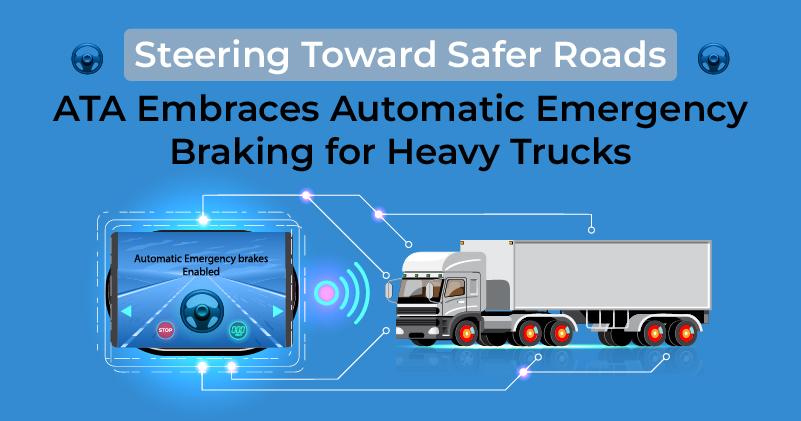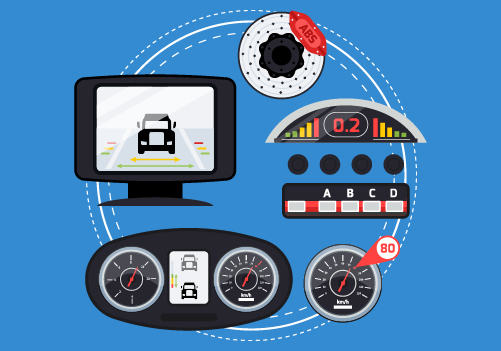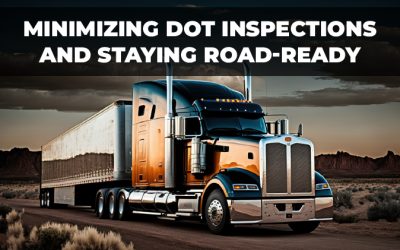
In today’s fast-paced world, the trucking industry plays a pivotal role in keeping goods flowing across nations. However, the tremendous responsibility of transporting goods also comes the challenge of ensuring road safety for truck drivers and other road users. Recognizing the urgent need for safer roads, the American Trucking Association (ATA) has taken a significant step forward by embracing Automatic Emergency Braking (AEB) for heavy trucks.
In this blog, we will delve into the world of AEB, understand its benefits, explore ATA’s proactive stance, and examine how this technology is poised to revolutionize road safety in the trucking industry. We can pave the way for a more secure and efficient transportation landscape by steering toward safer roads.
Update
On June 22, 2023, the American Trucking Associations expressed their approval as the Department of Transportation announced a new requirement for heavy-duty trucks to be equipped with automatic emergency braking technology.
ATA’s Vice President of Safety Policy, Dan Horvath, stated that the association has long advocated for AEB implementation on all new vehicles. With the recent NHTSA regulation mandating AEB on new passenger vehicles, ATA views this proposal for heavy-duty trucks as a timely and appropriate measure.
The trucking industry supports incorporating proven safety technologies like automatic emergency braking. ATA eagerly anticipates reviewing the proposal from NHTSA and FMCSA and pledges to collaborate in its smooth implementation.
Notably, in 2015, ATA urged manufacturers of cars and trucks to make AEB standard equipment on new vehicles. In 2021, the association supported legislation mandating AEB technology on new Class 7 and 8 trucks.
Understanding Automatic Emergency Braking (AEB)
Automatic Emergency Braking (AEB) is an advanced safety technology designed to help prevent or mitigate vehicle collisions. It utilizes sensors, cameras, and radar to monitor the road ahead for potential hazards, such as other vehicles, pedestrians, or obstacles. When the system detects a possible collision, it automatically engages the vehicle’s braking system to either reduce the severity of the impact or avoid the collision altogether.
Key features and aspects of AEB include:
- Collision Detection: AEB systems continuously analyze the surroundings in real time to identify potential collision risks. They assess factors like distance, speed, and trajectory of objects in front of the vehicle.
- Warning and Alert Systems: AEB typically provides visual and audible warnings to alert the driver about an imminent collision before engaging the brakes. This allows the driver a chance to take corrective action.
- Autonomous Braking: If the driver fails to respond to the warning or cannot react quickly enough, AEB automatically initiates emergency braking. It applies the brakes with the necessary force to prevent or reduce the impact of the collision.
- Pedestrian Detection: Many advanced AEB systems also have pedestrian detection capabilities, identifying individuals walking near or crossing the vehicle’s path. This feature is especially crucial in urban areas with high pedestrian traffic.
- Integration with other Safety Systems: AEB often works with additional safety technologies, such as adaptive cruise control, lane departure warning, and blind-spot monitoring, to provide comprehensive safety coverage.
- Future Developments: AEB technology continues to evolve, with ongoing research aimed at enhancing its capabilities, expanding its range of detection, and refining its performance in diverse driving conditions.
Overall, Automatic Emergency Braking represents a significant leap in vehicle safety technology, playing a crucial role in preventing accidents, saving lives, and making roads safer for all road users.
The ATA’s Stance on AEB
The American Trucking Association (ATA) has been a strong proponent of Automatic Emergency Braking (AEB) technology for all vehicles, including heavy trucks. ATA strongly advocates AEB for all vehicles, including trucks, to enhance road safety. Supports regulations, collaborates with authorities, and promotes AEB integration. Proactive in reducing accidents for safer roads.
By embracing AEB and aligning with regulatory efforts to make it a standard feature, the ATA emphasizes its dedication to enhancing road safety and advancing the trucking industry’s commitment to adopting effective safety technologies. This proactive stance aligns the ATA with the broader goal of reducing accidents and ensuring safer roads for everyone.
Challenges and Implementation
- Potential Challenges: Implementing AEB in heavy trucks may face integration complexities with existing systems and require vehicle-specific adjustments.
- Cost and Logistics: Trucking companies may encounter initial investment challenges for retrofitting or acquiring AEB-equipped vehicles, coupled with driver training requirements.
- Regulatory and Technological Hurdles: Adhering to varying safety regulations across jurisdictions and ensuring seamless compatibility with different truck models demand innovative solutions and close collaboration between industry stakeholders and regulatory bodies.
Final Words
The American Trucking Association (ATA) has demonstrated a solid commitment to road safety by embracing the implementation of Automatic Emergency Braking (AEB) technology in heavy trucks. By advocating for AEB in all vehicles, including heavy trucks, the ATA recognizes its potential to save lives and prevent collisions.
Challenges in implementing AEB for heavy trucks, such as integration complexities, cost considerations, and regulatory compliance, require a collaborative approach. Trucking companies, like TMS-Digital, one of the US’s leading Trucking software solutions providers, fully support the ATA’s decision to improve safety through AEB integration. TMS-Digital acknowledges the importance of adopting proven safety technologies to enhance the well-being of truck drivers and all road users.
For your trucking needs, partner with TMS-Digital, offering comprehensive solutions, including Dispatch, Tickets, IFTA reporting, and Driver Safety. Together, we can harness the power of technology to drive safer, more efficient operations while prioritizing the well-being of our drivers and the communities we serve.










